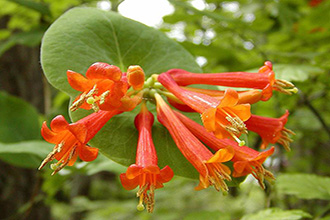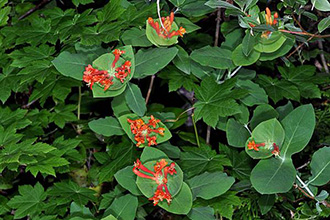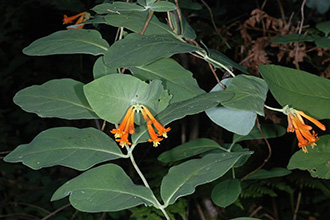Taxonomy: Kingdom - Plantae (plants). Subkingdom - Tracheobionta (vascular plants). Superdivision - Spermatophyta (seed plants). Division - Magnoliophyta (flowering plants). Class - Magnoliopsida (dicotyledons). Subclass - Asteridae. Order - Dipsacales. Family - Caprifoliaceae (honeysuckle). Genus - Lonicera L. Species - Lonicera ciliosa (Pursh) Poir.
Ecology: Orange honeysuckle is an understory component of open to dense forests at elevations ranging from 700-1700 m.
In the WFDP: Orange honeysuckle is incredibly rare in the WFDP, with only one stem above 1 cm at DBH that is tagged.



